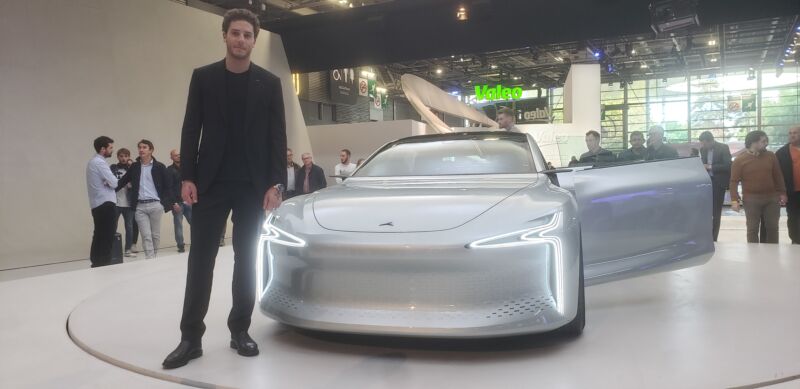
PARIS—A 500 hp (373 kW) car with a 621-mile (1000-km) range reaching a maximum speed of 143 mph (230 km/h); the world’s first car partially powered by removable tanks… The stylish and innovative Hopium Machina and NAMX SUV, both hydrogen powered vehicles developed by startups, were among the chief attractions at this year’s Paris Auto Show.
Considering that Hopium was founded by a former Le Mans 24 hours winner, it isn’t a surprise that Machina is performance-focused. Olivier Lombard, who won in the LMP2 category in 2011 at Le Mans, also had a stint as a development driver of H24’s hydrogen-powered prototype that is set to run in future Le Mans races. “As a racing driver, for many years, I developed a race car with hydrogen technology. That is why I went for a performance car that also had range and took between three to four minutes to refuel,” Lombard, who is also the CEO of Hopium, told Ars Technica.
Lombard elaborated on the inspiration behind Machina. “When you are a race car driver, you have a close proximity with your car. You need to understand the car and feel its every move. We have the same closeness with Machina, whether it’s the car’s behavior on the road or the interactions inside like tactiles with haptic feedback,” he said.
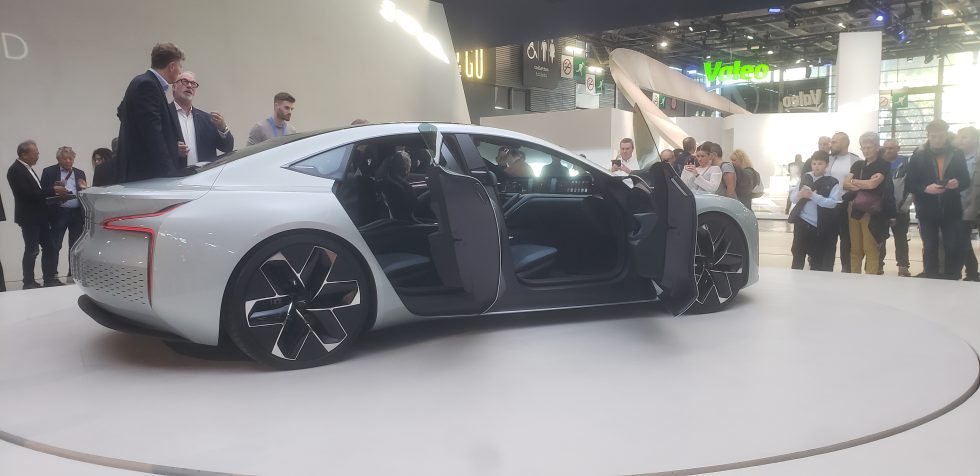
According to Remi Voisin, a senior engineer at Hopium, what also made Machina stand out was its state-of-the-art fuel cell technology. “Ours is the most powerful fuel cell (200 kW peak power) ever produced which can deliver exclusive performance in terms of range, power and energy availability,” Voisin said.
Voisin added that they are aiming to start production of Machina by the end of 2025 or beginning of 2026.
A tank and six pods
For the Paris-based NAMX (New automotive and mobility exploration), the motivation behind designing a SUV with removable tanks was to find a new solution for hydrogen mobility. “Our CapXstore system costs much less than the price of building a hydrogen fuel station, '' Thomas de Lussac, co-founder and head of design, told Ars Technica.
The high end NAMX ‘HUV’ (Hydrogen Utility Vehicle) will generate 550 hp (410 kW) and have a maximum speed of 155 mph (250 km/h) with a maximum range of 497 miles (800 km). Of that total, 311 miles (500 km) will be provided by the main fixed tank, while the car will be able to run for an additional 186 miles (300 km) thanks to removable "CapX" capsules filled with hydrogen. “The NAMX HUV will have six such capsules, each with a 31 mile (50 km) range,” de Lussac said.
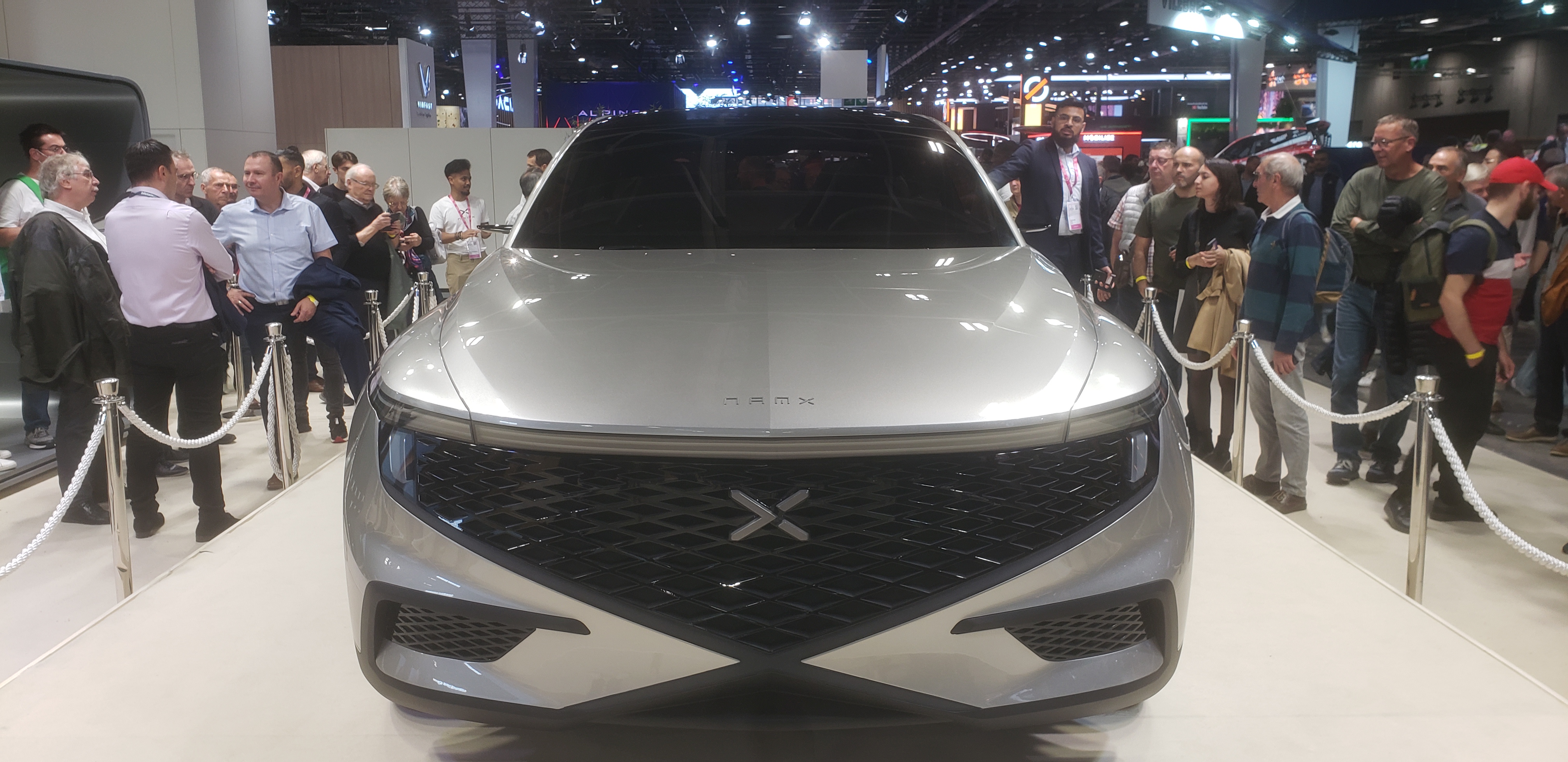 NAMX has gone for a more on-trend SUV. In this case it's an HUV, since its powered by hydrogen.Dhananjay Khadilkar
NAMX has gone for a more on-trend SUV. In this case it's an HUV, since its powered by hydrogen.Dhananjay Khadilkar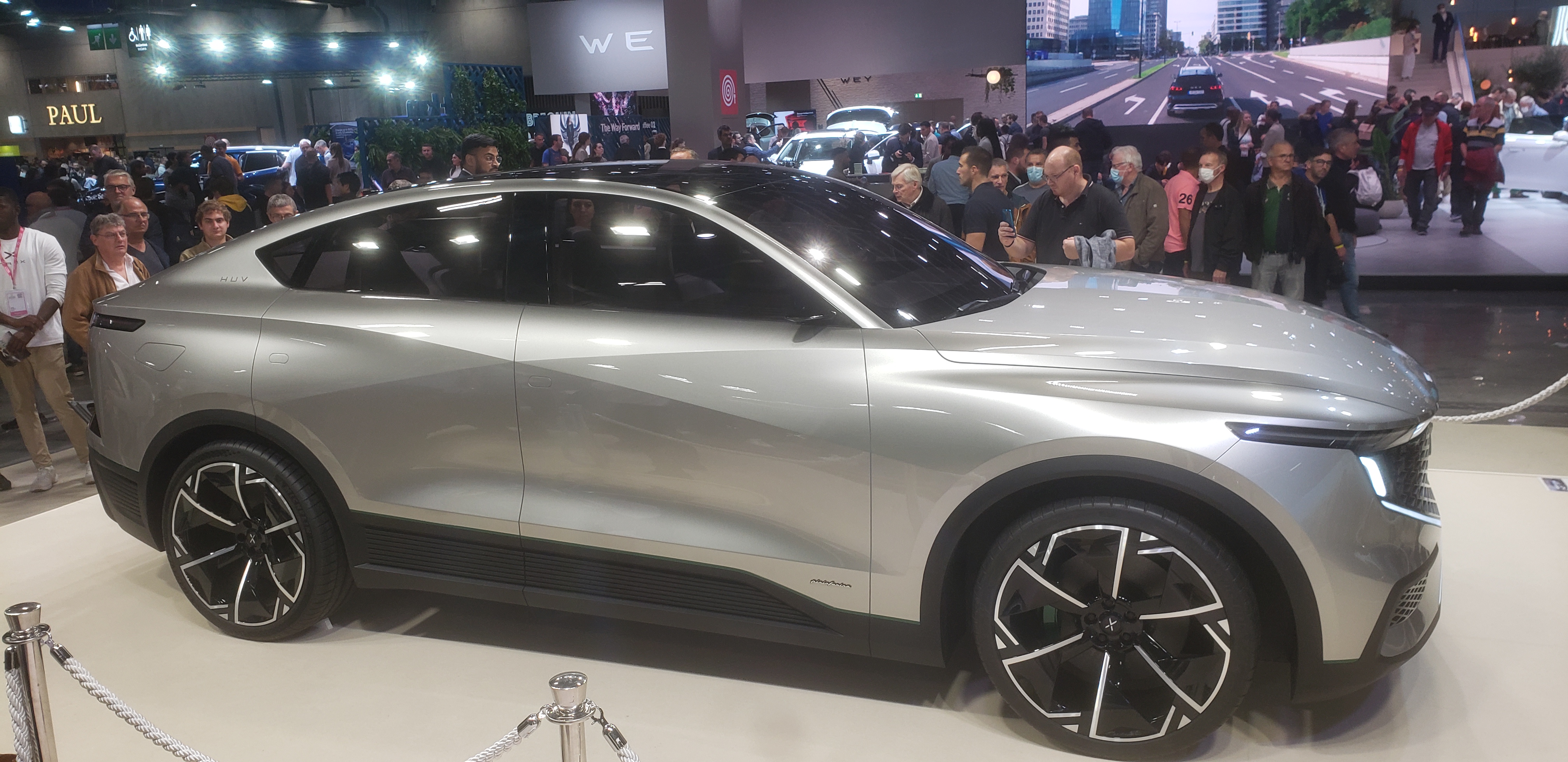 The HUV was designed by Pininfarina.Dhananjay Khadilkar
The HUV was designed by Pininfarina.Dhananjay Khadilkar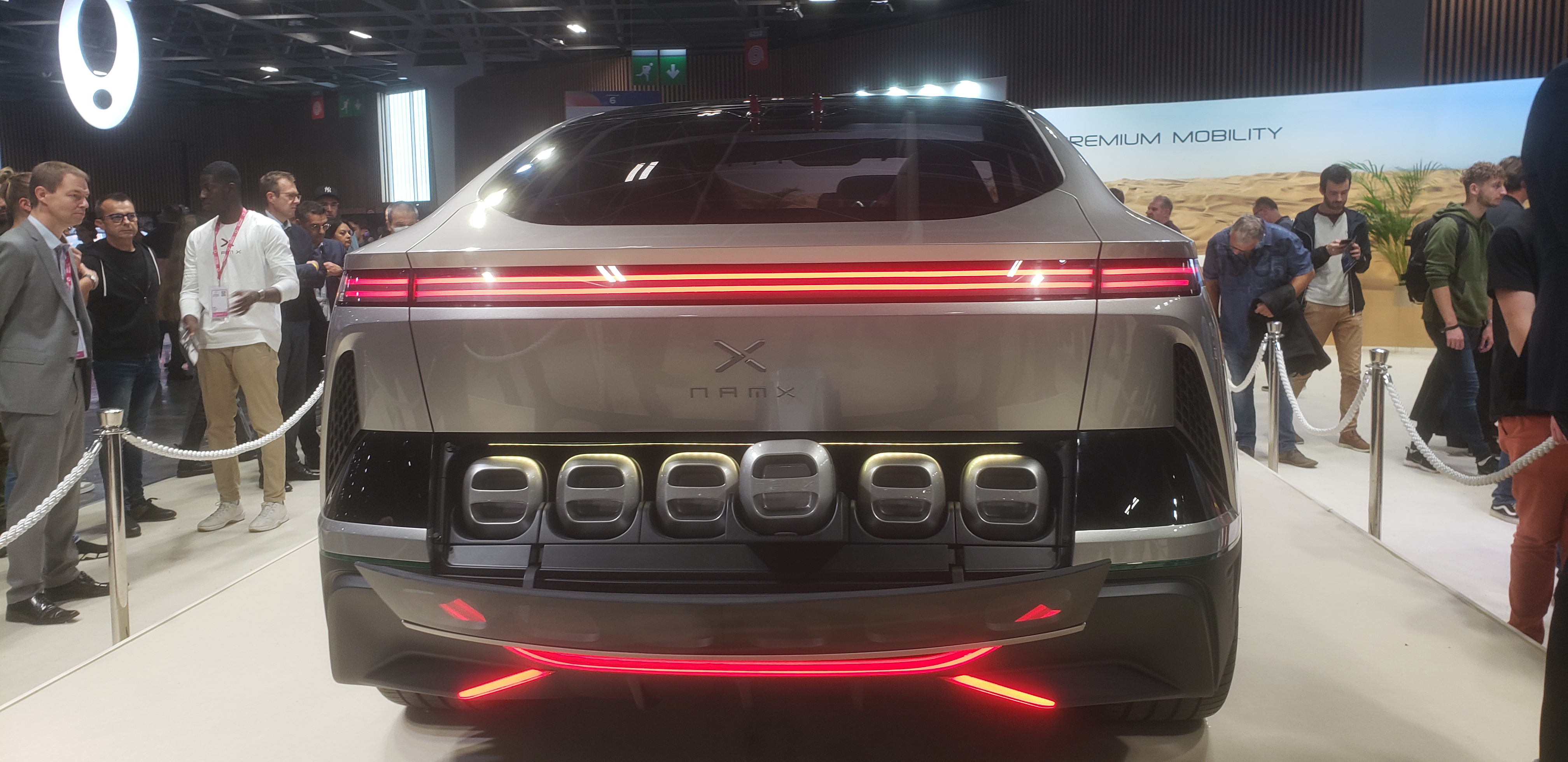 These are the HUV's removable CapX hydrogen capsules. You can see the third-from-rightmost capsule is sticking out, ready to be changed.Dhananjay Khadilkar
These are the HUV's removable CapX hydrogen capsules. You can see the third-from-rightmost capsule is sticking out, ready to be changed.Dhananjay Khadilkar
He added that these CapX capsules can be exchanged at the CapXstores that the company plans to install by the beginning of 2026. “Our objective is to create a network of CapXstores where these capsules will be available. We plan to put a CapXstore every 45 km,” he said. He added that the capsules can be filled at hydrogen stations. However, NAMX won't be producing its own hydrogen but will rather purchase it from existing commercial suppliers.
De Lussac said their aim was to extend the concept beyond cars to all kinds of mobility as well as for boats and machine works.
The other hydrogen-powered vehicles on display included a Citroen light commercial van with an 8.8-lb (4 kg) tank capacity, a range of 249 miles (400 km) and refueling time of three minutes. “The van uses a hybrid system of hydrogen and battery power. The battery, which provides a range of 50 km, is charged by the fuel cell,” Thierry Pinot of Stellantis told Ars Technica.
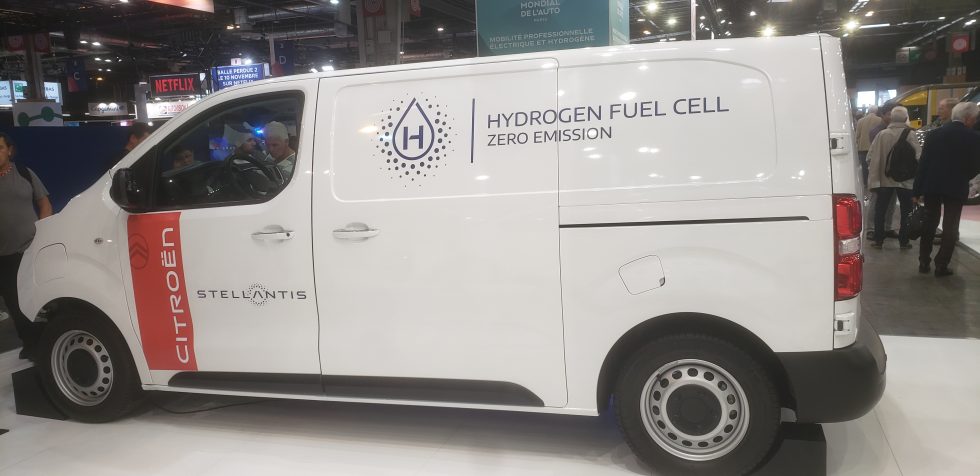
According to Pinot, the hydrogen hybrid system allows the van to have the same payload capacity as that of its internal combustion engine counterpart.
Finally, the Paris auto show also featured a concept car with striking design called Alpenglow. Developed by the French sports car manufacturer Alpine—essentially Renault's sporting division—it's a futuristic single-seater powered by a hydrogen-powered internal combustion engine.
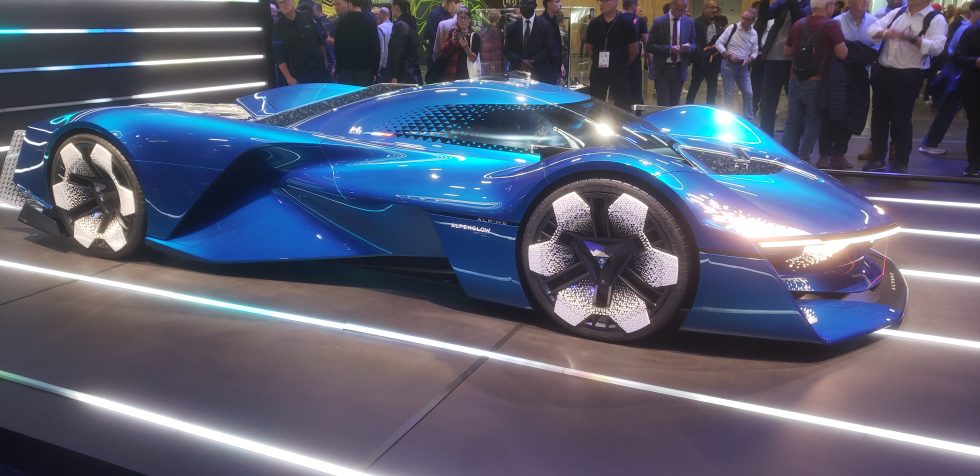
Alpine says the Alpenglow "embodies the brand's revival, in terms of design and technology" and that it "sets the tone as a source of inspiration for all future Alpine models." That said, it is not destined for production and while Alpine has plans for lightweight electric sportscars developed together with Lotus, it would be surprising to see an Alpine with a hydrogen internal combustion engine go on sale any time soon, given the very low power and efficiency that such engines generate.
"auto" - Google News
October 22, 2022 at 08:15PM
https://ift.tt/n4L6VRk
Hydrogen-powered startups shine at the Paris Auto Show - Ars Technica
"auto" - Google News
https://ift.tt/fqTbwAH
https://ift.tt/PsCEwDg
Bagikan Berita Ini














0 Response to "Hydrogen-powered startups shine at the Paris Auto Show - Ars Technica"
Post a Comment